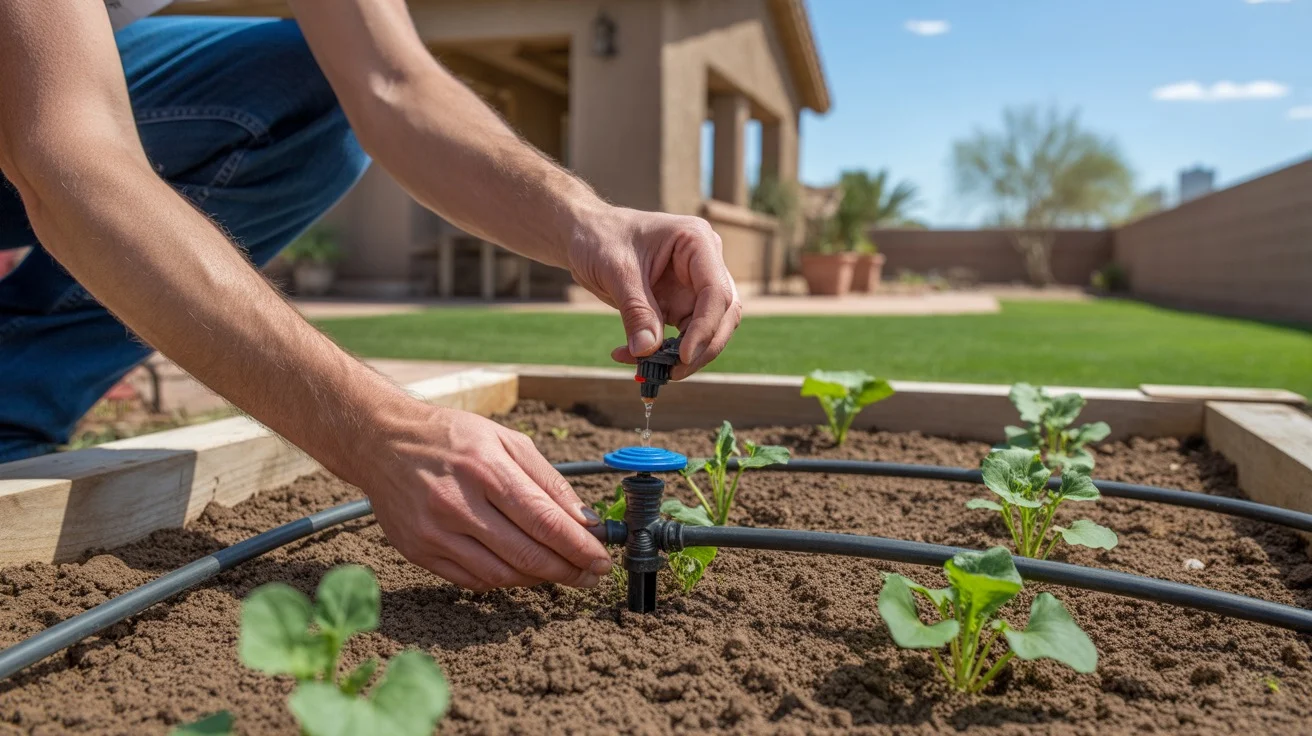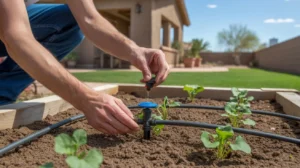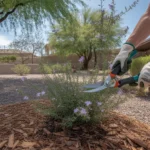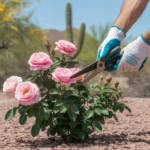As the days grow longer and the sun’s rays intensify, it’s time for Southeast Valley homeowners to turn their attention to early spring irrigation. Getting ahead of watering needs before the chirp chorus of thirsty plants begins is key to maintaining a lush, healthy yard all season long. With a little proactive TLC now, you can set your landscape up for success.
Early spring is the ideal time to assess your irrigation system and make any necessary adjustments or repairs. Check for leaks, clogs, or damaged components and address issues promptly. This will ensure your yard receives the hydration it needs without wasting precious water.
Step 1: Inspect Your Irrigation System
Before firing up your sprinklers for the season, give your irrigation system a thorough once-over:
- Check for leaks in pipes, valves, and sprinkler heads
- Clear any clogs or debris blocking water flow
- Straighten any tilted or sunken heads for even coverage
- Replace damaged components like cracked risers or worn gaskets
Taking care of these maintenance tasks upfront will keep your system running smoothly and efficiently throughout the spring watering season. A little prevention goes a long way in avoiding bigger headaches down the line.
Step 2: Program Your Watering Schedule
With your irrigation system in tip-top shape, it’s time to set up your spring watering schedule. In the Southeast Valley, experts recommend watering deeply and infrequently to encourage deep root growth and drought tolerance.
As a general rule of thumb, aim to water:
- Grass: 1 inch per week, split into 2-3 waterings
- Trees and shrubs: 1-2 inches per week, every 7-10 days
- Flower beds and gardens: 1-2 inches per week, split into 2-3 waterings
Of course, these are just guidelines. Adjust your schedule based on your yard’s unique conditions, such as soil type, sun exposure, plant varieties, and weather patterns. An irrigation smart controller can help take the guesswork out of programming by automatically adjusting run times based on local weather data.

Step 3: Monitor and Adjust
As spring progresses and temperatures climb, keep a close eye on your yard’s watering needs. Look for signs of over- or under-watering, such as yellowing leaves, wilting, or soggy soil, and adjust your irrigation schedule accordingly.
It’s also a good idea to periodically run your system manually to check for any issues that may have cropped up, like clogged emitters or misaligned sprinkler heads. Catching and correcting problems early will keep your yard looking its best all season.
By taking a proactive approach to early spring irrigation, Southeast Valley homeowners can set their yards up for a successful growing season. With a well-maintained system, thoughtful scheduling, and attentive monitoring, you’ll be rewarded with a lush, vibrant landscape that’s the envy of the neighborhood.











